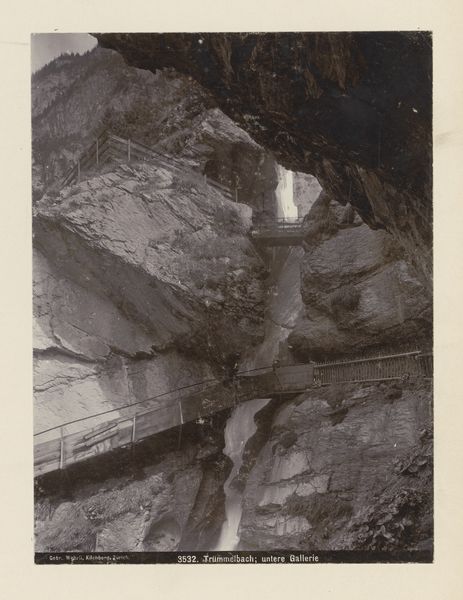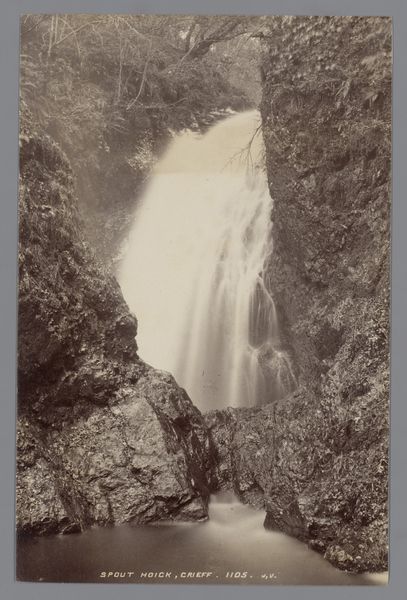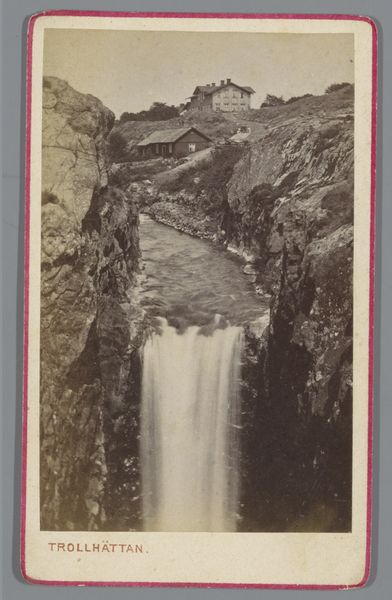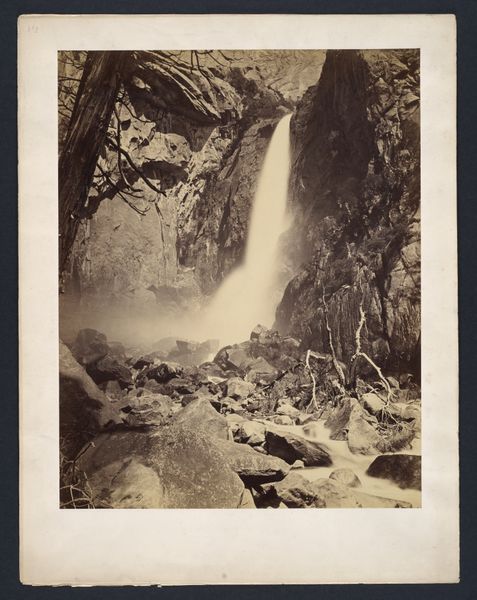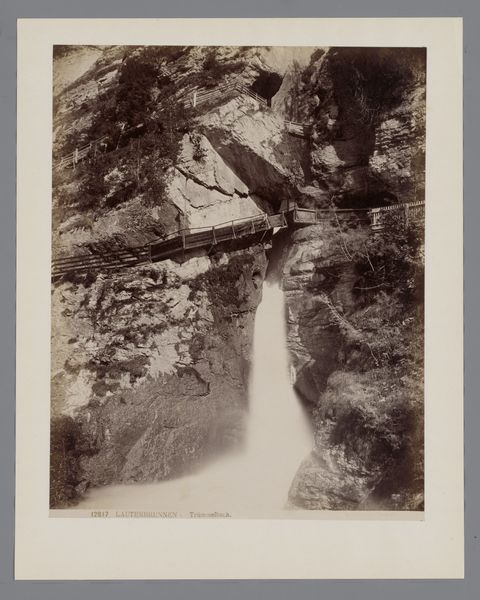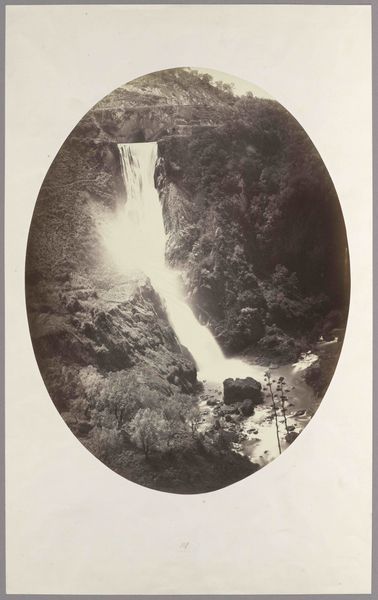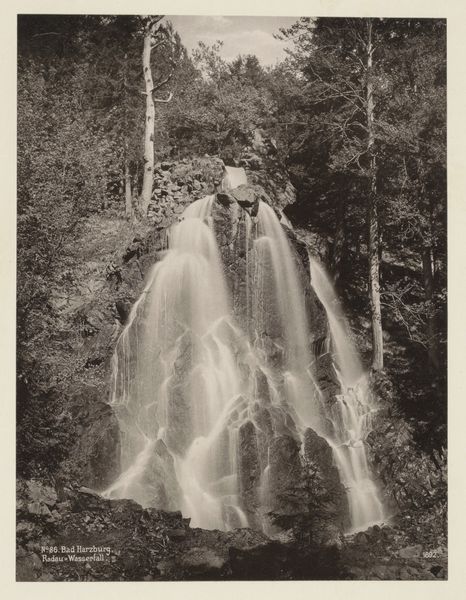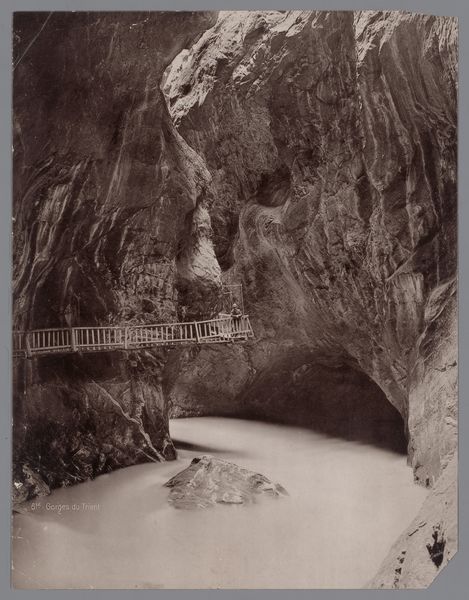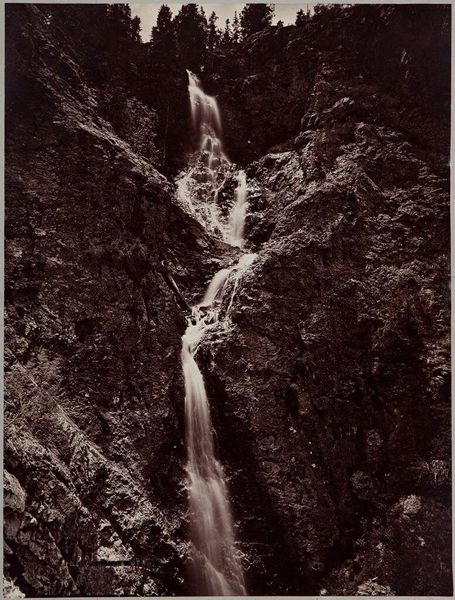
Dimensions: height 218 mm, width 163 mm
Copyright: Rijks Museum: Open Domain
Curator: Let's explore this albumen print titled "Trümmelbachwaterval." It comes to us from an anonymous artist and is dated sometime between 1897 and 1910. Editor: Immediately, I'm struck by the scale—or rather, the feeling of it. That waterfall looks immense, yet the muted tones create a sense of quietude. Curator: It's interesting you mention scale. Images like these, often disseminated as postcards or travel souvenirs, shaped perceptions of landscapes, specifically in the burgeoning era of tourism. This particular location, the Trümmelbach Falls, was, and still is, a major tourist attraction. Editor: Absolutely. Consider the way the path is captured—just visible, and constructed almost impossibly up the side. It speaks volumes about access and control over nature. The image isn't just documenting the waterfall; it subtly showcases the human manipulation of the environment for leisure. Curator: Precisely. There’s an inherent tension there. While the image appears to celebrate nature's sublime power—a key Romantic ideal—it simultaneously reveals the growing infrastructure designed to commodify the natural world. The photograph itself becomes part of that system of representation. Editor: I agree. And in this period, photography played a crucial role in constructing a national identity, particularly in places like Switzerland. Picturesque views like this one bolstered notions of natural beauty as integral to the nation's identity and brand. Who was this image meant for, and what cultural values were being conveyed? Curator: It certainly served the interests of a rising middle class eager to experience and document their encounters with the natural world. Albums filled with such prints became displays of one's cultural capital, proof of their engagement with 'high' culture and leisure pursuits. Editor: I think also understanding the limitations of the albumen print affects how we analyze the work. This print type created images through a long, detailed process, different from a modern-day snap of the same waterfall, thus the labor in this picture creates an entirely different dynamic to consider when comparing it with the types of pictures and social interactions we'd encounter today. Curator: Absolutely. This journey into turn-of-the-century tourism and photographic representation has shown me a richer understanding of landscape as not just a place but an active social space. Editor: And for me, it underlines the fact that every landscape image is charged with implicit political messaging, shaping cultural values and influencing access to those spaces.
Comments
No comments
Be the first to comment and join the conversation on the ultimate creative platform.
